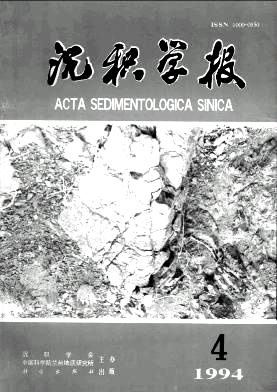Sedimentary Filling Models and Hydrocarbon Accumulations In Half一graben Basin—An Example from the Southeast }Dongpu Depression
- Received Date: 1993-05-15
- Publish Date: 1994-12-10
-
Key words:
- Half-graben basin /
- Listric take-filling model /
- planar kink fan-filling model and petroleum accumulation /
- /
Abstract: The marginal listric fault, planar kink fault and Domino faults were found in the analysis of the tectonic lithofacies in the Southeastern part of the Dongpu Depression,which was one of typical half-graben basins in China. These faults impressed significantly on the evolution of the basin itself, on the development of the depositional systems and the distribution of hydrocarbons. The crest -cut faults of the east border of the Dongpu Depression consist of the listric faults with NE trend and the panar kink faults with NNE trend, which have controlled the formation and evolution of the Depression. The listric faults were formed by the regionally extensional stress field. They were long-active ones, and the deep sags or oil source centers were developed along the listric faults. The longer fault strike and longer active time the listric faults, the larger and deeper the sags. There are three listric faults in the tan-liao fault at the eastern margin of the Southeastern Dongpu Depression,and three oil source centers along the faults, which are respectively;the Geganji North,the Gegan扛South Sag and the Guyan Sag. The listric fault in the middle was the longest in its strike and throw,consequently, the Geganji South Sag was the largest one of the three. The marginal planar kink faults were also formed in regionally extensional stress field, but their bases of the upfaulted block were broken into several parts to form the step-planar kink faults, in which the rising bases evolved into buried h}71s. Although the planar kink faults and the listric faults influenced on the evolution of the Dongpu Depression, the down-faulted blocks the planar kink faults often conducted as the seperating zones by large volumes of sediments of allovial fan,delta-fan and subaqueous fan. Because there are a lot of reservoir sandbodies and various fault traps or lithological traps with in the down-fault block sediments, the blocks are significant hydrocarbon accumulation areas in the half-graben basins. The Baimiao Structure located on the down-fault block of the Lan-liao fault was formed under the setting mentioned above and was rich in oil and gas. Similar situations were found in the other two planar kink faults. The Domino faults were produced by the local extensional stress field under the influence of the marginal faults, and commonly distributed on the central uplift belt and the gentle slop belt of the half-graben basins. The Domino faults consisted of a few of parallel faults with about equal distances, and led the sediments and traps into linear arrangement. For example, the Domino faults formed on the central uplift belt in the Southern part of the Dongpu Depression introduced the delta sediments and turbidites into the deeper area of the basin,which produced a number of linear sandbodies and traps along the fault troughs and were the most important hydrocarbon accumulation areas. In the end,this paper put forward the listric lake-filling model, which affected the development of oil source centers and the hydrocarbon potential of the basin;the planar kink fan-filling model and the Domino delta-turbidite-filling model which controlled petroleum accumulations in the basin. These models are of significance in basin analysis and evaluation.
| Citation: | Jin Qiang, Xin Quanlin, Wang Weifeng. Sedimentary Filling Models and Hydrocarbon Accumulations In Half一graben Basin—An Example from the Southeast }Dongpu Depression[J]. Acta Sedimentologica Sinica, 1994, 12(4): 118-123. |






 DownLoad:
DownLoad: